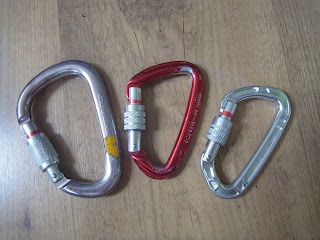Being an alpine climber, I have been taught to go as light and fast as possible. Less weight means less fatigue, less spend energy, more stable when walking/climbing, which results in more speed. Speed is important in the mountains, because snow turns to slosh and avalanche and snowfall dangerous increase dramatically during the day. Besides nobody want to sleep in an unexpected improvised bivy on a mountain for fun.
There is a fine line between less weight and enough equipment. Experience to read the landscape, knowing what to expect, enough experience walking/climbing and your physical shape are some factors which determines how much you need to bring. One way of doing this is to get a lighter version the equipment you are bringing (usually at the cost of durability), simple carrying less (just your layer system of clothing and one spear of boxers) and having multipurpose equipment.
Using these principle's in emergency preparedness can give people similar advantages in reducing fatigue, saving energy and being faster. It also reduces the chance of not getting out fast enough, because you are carrying too much stuff , take too much time to deciding what to bring and simple making the decision to get out can be harder because you are leaving a lot of resources.
A few principles to be light and fast: :
Quality matters
Spend a little more to get a higher quality item. If the build quality is much higher, you need less redundancy. This simply means less stuff and more place to store other important things or less to carry with you. Also well build equipment simply works better. Besides if something is twice as expensive, but last four times longer it's half the price.
Durability vs. overkill
You need to check what durability your equipment needs to be. Does something needs to last a few month, years or century's? This depends on the emergency you are planning for. If you are just preparing for getting lost or stuck in the wilderness, equipment that lasts a few days/weeks can even be sufficient.
Keep things multipurpose
Multipurpose can be buying things which are uhmm.. well multipurpose. A multitool being a very good example. But this can also mean not modifying equipment, making it single purpose. For instance keeping buckets as it is. You can modify a bucket by drilling holes and mounting filter elements to make a gravity filter. But you loose the capability of the bucket. There are plenty of siphon type filters just as cheap and effective.
Have less or at least not too much
Have enough is important. Having too much can be a hassle. It takes too much space, ties up too much money, hard to keep everything maintained and keep familiar of the way it operates. A lot of equipment needs to be maintained and using them keeps them in shape. For instance cars need to be driven to keep everything lubricated, tires in shape and batteries charged.











